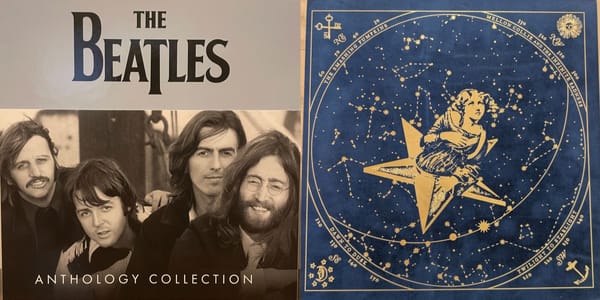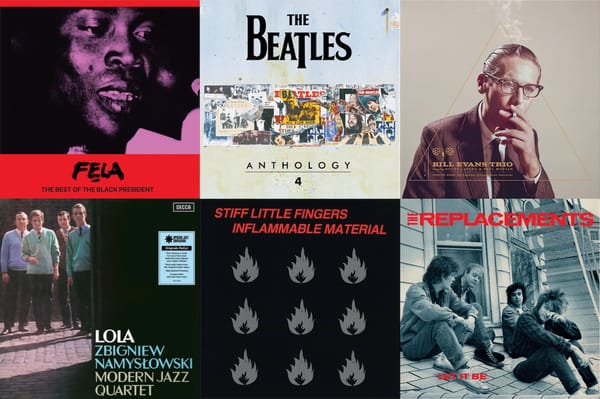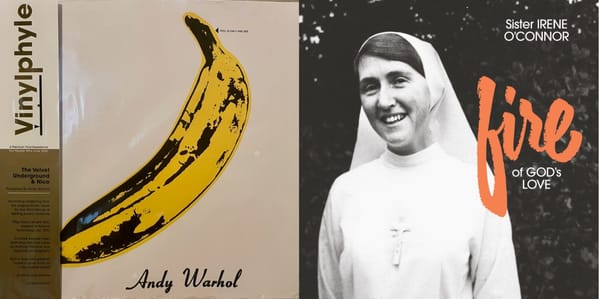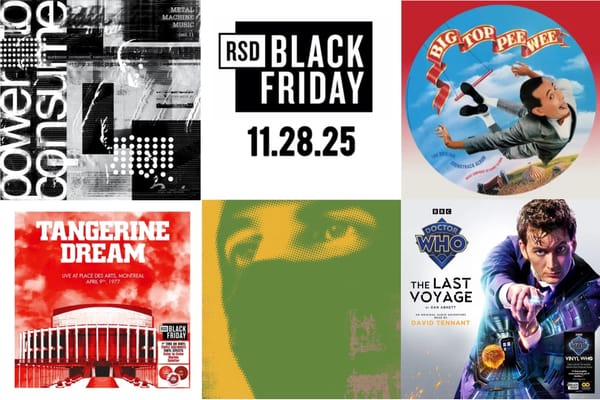Review: Tears for Fears’ big breakthrough turns 40
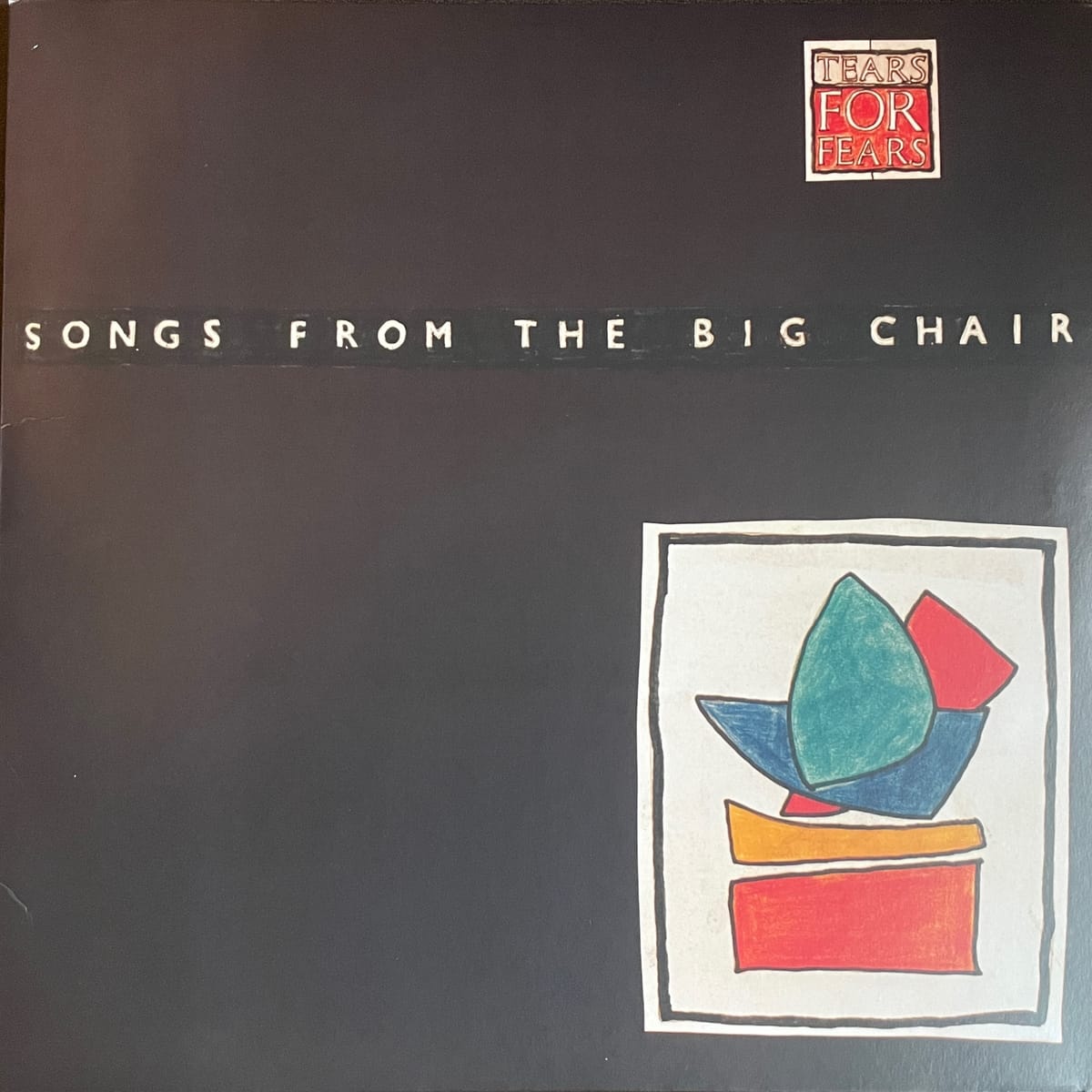
1985’s Songs from the Big Chair gets a 2-LP vinyl reissue.
Songs from the Big Chair is one of those albums that you can’t examine too closely or it falls to pieces. By all metrics, it shouldn’t work. The 1985 album is a deliberately plotted, swing-for-the-fences effort from a sulky synthpop duo that wanted to be stadium stars, full of rigid programmed beats, melodies inflated to their breaking points, earnestly pretentious lyrics, and the occasional silky-smooth sax solo. Side 2 has not one but two versions of an old B-side, and the album’s closing track is a new-agey instrumental the band’s keyboardist/benefactor had lying around before guitarist/songwriter Roland Orzabal nicked it to pad out the album. One of its massive hit singles was written at the last minute, barely making it onto the tracklist. And another of its massive hit singles is a nearly seven-minute repetitive mantra with a message of “C’mon, everybody, if we all sing together, we can change the world!”
And yet Tears for Fears’ second album defies all logic, working wonderfully not just as a maximalist pop record but as a cohesive statement on its own terms. This is due in large part to the aforementioned massive hits, “Everybody Wants to Rule the World” and “Shout,” which instantaneously threw international klieg lights onto the duo of Orzabal and bassist Curt Smith. But as anyone who’s lived with the album for some fraction of its 40-plus years knows well, Big Chair’s real centerpieces are the “Broken/Head Over Heels” medley and “The Working Hour” (which contains one of my favorite mondegreens in the line that I thought for years was “Fear is such a businessman,” going perfectly with the theme of the song). Throw in a tribute to Robert Wyatt (the jazzy “I Believe”), another big single that was basically audio verité of the group learning how to use a sequencer (“Mothers Talk”), and the aforementioned instrumental from Ian Stanley (“Listen”), and you have a Reagan/Thatcher–era classic.
The album found Orzabal and Smith reaching the top of a trajectory that had begun in 1981 with a series of singles and escalated with the 1983 full-length, The Hurting—a collection of moody, Arthur Janov–inspired synthpop that surpassed expectations to become a big hit. While bassist Smith sang lead on many of the early songs, Tears for Fears’ success had increased primary songwriter Orzabal’s confidence, gradually shifting the duo’s balance of power to make him the band’s ostensible frontman. The pair had augmented themselves for the live circuit with drummer Manny Elias and keyboardist/programmer Stanley, who also provided the band with their Wool Hall studio, a historic Bath-area building where the band recorded Big Chair. With producer Chris Thomas as a fully embedded collaborator, the ensemble began shaping a short list of songs into an album over the course of a year, littered with countless takes, overdubs, false starts, and remixes. Needless to say, they pulled it off, and Songs from the Big Chair became one of the defining albums of 1985, creating a sensation that the duo, their auxiliary members, and their production team had difficulty following up.
Songs from the Big Chair was served well on its 30th anniversary by a massive deluxe edition, a 4-CD set that included B-sides, remixes, edits, alternates, and a smattering of live tracks, plus two DVDs that contained a 5.1 remix and the 1985 documentary Scenes from the Big Chair. That doesn’t leave much left over for the album’s 40th anniversary, so Universal in its wisdom has opted to re-release only the first three CDs of the 2015 deluxe edition—giving by taking away, or some such logic—as well as a separately packaged Blu-ray that has new Atmos, 5.1, and stereo mixes and is only available at the SuperDeluxeEdition web store. Still, that leaves quite an opportunity for the 40th vinyl edition, as the big 30th box did not have a vinyl component.
In that sense, it’s hard not to be disappointed. The 40th anniversary vinyl edition is a 2-LP set that includes the original Songs from the Big Chair, plus an alternate version of the album made up of different remixes, edits, and demos that all appeared on the 30th box. While it’s nice to have a couple of these things on vinyl, some of the choices are strange, and there is probably an album’s worth of actual B-sides that would have made more sense for a supplemental disc.
To make the disappointment cut a little deeper, the 40th anniversary campaign started auspiciously. Earlier this year, a new cassette of Songs from the Big Chair came out that replicated a limited-edition cassette version that briefly appeared in the UK in 1985. Side A contained the album in its entirety, while Side B was a collection of B-sides and alternates, including songs like “The Big Chair” (a non-album track that lent the album its name), “Empire Building,” and “The Conflict.”
This vinyl version, however, takes a totally different tack for its bonus material, opting to recreate the original album track by track with a melange of alternate takes, mixes, and edits. It makes for a very odd compilation, as some of the alts are nearly identical to the finished LP: “Listen (clean intro)” is the LP mix with exactly that, a “clean intro” rather than a crossfade. “Everybody Wants to Rule the World (alternative single version)” is a discarded mix with an unused keyboard horn part that was resurrected for 1986’s “Everybody Wants to Run the World” charity remake, making it all the odder that they didn’t simply choose the “Everybody Wants to Run the World” version itself. And “Head Over Heels (Hughes 7” mix)” is pretty similar to the album mix to my ears, just missing the flange effect on the drum break—this was chosen over another 7-inch remix done by the album’s recording engineer Dave Bascombe that perhaps should have been used instead, as its heavy reverb sounds substantially different from the LP mix. “I Believe (A Soulful Re-Recording)” is the alternate live version that was released as an A-side and makes good sense for inclusion, but “Mothers Talk (early mix)” is an instrumental working version that would have been better replaced with the song’s very different US single version. “The Working Hour (piano version)” and “Broken (demo)” are the only tracks that appeared on that 1985 cassette. I think they should have opted for the second disc to contain all of the cassette’s B-sides, plus the additional ones that appeared on later singles—some of which were genuinely different interpolations of album tracks. Apart from an interesting early version of “Shout” that’s in a higher key, I don’t think there’s anything on the second LP that’s especially revelatory.

As for the new vinyl of the album itself? It sounds all right. The instruments are depicted accurately and plainly, and there is a sense of space around everything that feels comfortable and well-diagrammed. But when I compared it to my 1985 US Mercury copy, cut by Greg Calbi at Sterling Sound and pressed at Hauppauge Record Manufacturing on Long Island, the new cut became comparatively flat and sterile. It’s pressed at a much lower volume than my 1985 Sterling, so I had to be careful that I wasn’t merely missing the boosted levels. But after matching the volumes on both cuts, I noticed the new one is missing much of the excitement and air that gives the album its magic. Indeed, the new cut—while clear and accurate in every way—makes the album’s mixture of digital and natural timbres sound dated and clinical, while my 1985 Sterling sounds fresh, unified, and lively, with an impressive soundstage, an impactful bottom end, and true, pleasing highs. After even more careful listening, I thought I detected a slight veil of sound on the newer pressing that might be the work of some digital futzing. There was even a faint trace of sibilance on “Everybody Wants to Rule the World.”
The new version has two advantages, though. For one, the music on the inner grooves is rendered with more accuracy than on my original, which doesn’t exactly suffer from inner-groove distortion (IGD) but does get a bit smeary-sounding toward the end of each side; “Mothers Talk” in particular is a busy song that loses some clarity during the dismount. And the other advantage is that this new cut has left and right in the correct speakers—the 1985 US cut accidentally reversed the channels.
As to where this new cut comes from, it’s anyone’s guess, so I’ll make my own. There’s no mastering credit to be found anywhere in the package. SuperDeluxeEdition’s Blu-ray disc includes the original 1985 album mix in 96/24, and those tracks bear a separate mastering credit for Miles Showell of Abbey Road Studios. So I think Showell’s new mastering is probably also the source for this vinyl set. However, the vinyl deadwax does not indicate Showell or anyone else for that matter—Showell always etches “MILES” and “ABBEY ROAD” into his cuts, and these are not present on this new vinyl. So my deduction is that the digital file of Showell’s remaster was sent directly to the pressing plant and a cut was made there anonymously. The pressing plant in this case is Pallas in Germany, and they have lacquer-cutting facilities, so that all adds up. But it’s a little surprising that an album as big and as well-recorded as this was not given a dedicated—and credited—lacquer-cutting engineer.
That also leaves the question as to the source of the bonus tracks. Interestingly, I found the second disc to be a little better sounding than the album itself, boasting a wider soundstage, more dynamics, and more transparency into the sonic palette. Perhaps this is because some of the recordings are works in progress and therefore have simpler mixes, whereas the finished album went through gobs of processors, compressors, effects units, and such. Or perhaps the source is just a better one.
The 40th anniversary edition is pressed on translucent red vinyl, and my copy suffered no issues, being perfectly flat, clean, and click-free, with perhaps a very low level of background noise that did not impact matters too greatly. The double vinyl comes inside a direct-to-board single-pocket jacket—not a gatefold—with alternate artwork of a rough abstract painting that was at one point considered for the front cover. The inner sleeves are printed paper, not poly-lined; LP 1’s sleeve replicates the original UK inner, while LP 2 reprints an interesting promotional pamphlet that circulated in advance of the album’s release. There are no additional liner notes. My copy’s inner sleeves suffered some split seams, but the outer sleeve had no problems.
If the 2-LP edition isn’t your bag, there are some single-LP variants available, including a “Coke-bottle clear” variant, a picture disc, and a gray marbled version that’s already sold out. But all things considered, the 40th anniversary for this album might be a punt for vinyl lovers, unless they are the types of Tears for Fears fans for whom the disc of alternates and the new cover art are reasons enough to buy in. For the rest of us, I think hunting down a 1985 Sterling cut is still the best option. Maybe on the 50th anniversary, we’ll get a vinyl version that gives the original a run for its money.
Songs from the Big Chair | Mercury/Universal 2-LP 33 RPM • mastering and lacquer info unknown • pressed at Pallas, Germany • translucent red vinyl
Listening equipment:
Table: Technics SL-1200MK2
Cart: Audio-Technica VM540ML
Amp: Luxman L-509X
Speakers: ADS L980

